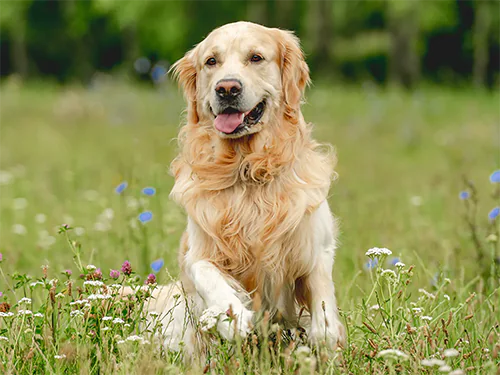Recessive red coat

Definition
Genetic basis
Other relevant information
Bibliography
Everts RE, Rothuizen J, van Oost BA. Identification of a premature stop codon in the melanocyte-stimulating hormone receptor gene (MC1R) in Labrador and Golden retrievers with yellow coat colour. Anim Genet. 2000 Jun;31(3):194-9.

